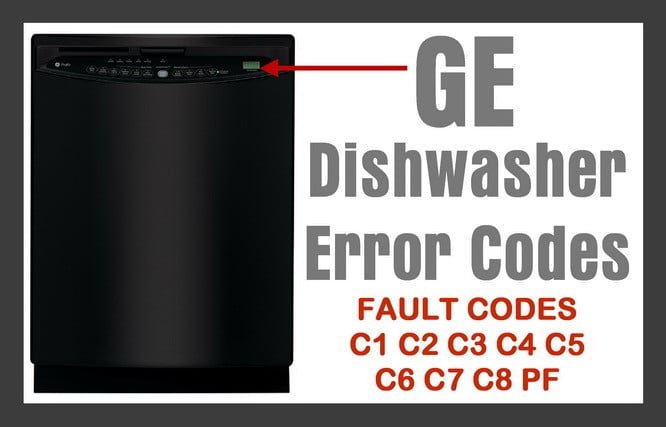
You might be wondering, what exactly does the E3 error mean? In simple terms, it’s the dishwasher’s way of telling you that it’s having trouble with the water heating process. Think of this error like a rainy day—the dishwasher isn’t able to reach its desired “sunny” temperature, so it simply can’t do its job properly. This can happen for a variety of reasons, from a faulty heating element to something as simple as a glitch in the control board. Here’s the deal: by understanding what causes this error and how you can prevent it, you’ll be well on your way to ensuring your dishwasher stays in tip-top shape.
Understanding the Causes of GE Dishwasher Error Code E3
To get to the root of the E3 error, it helps to first understand how your dishwasher heats water. Imagine your dishwasher as a mini-hotel for your dishes. Just like guests need hot showers, your dishes need hot water to get that squeaky clean shine. When the dishwasher can’t heat the water to the correct temperature, it flags an E3 error. The reasons can be varied, and understanding them is the first step in prevention.
One common cause is a malfunctioning heating element. This component is like the boiler in your house—it warms up the water for the entire cleaning cycle. If the heating element is damaged or worn out, it can’t heat the water properly, leading to the E3 error. Another possible culprit could be the thermostat. This tiny device plays the critical role of ensuring that water doesn’t get too hot or too cold. If it fails, even the heating element can’t correct the temperature, resulting in an error.
There might also be issues with the internal wiring or connections. This is akin to a power outage—you can’t get the heat you need if electricity isn’t flowing properly. Loose connections or damaged wires can disrupt the entire heating process. It’s also worth mentioning that a glitch in the control board can lead to an E3 error. This is the heart of your dishwasher—guiding and directing various operations akin to a maestro conducting an orchestra. A problem here can easily trigger an error code.
Preventing Error Code E3: Practical Steps You Can Take
Now, let’s dive into some practical steps you can take to prevent this E3 error from recurring. Imagine you’re giving your dishwasher a regular check-up, kind of like a dentist visit for your teeth. Routine maintenance can keep your dishwasher in smooth working order, nipping potential problems in the bud.
First up, regularly inspect the heating element for any signs of damage or wear. If you notice anything that doesn’t look right, it’s a good idea to get it checked or replaced by a professional. Think of it like changing a flickering light bulb—you wouldn’t want to be left in the dark. This proactive step can save you a lot of hassle down the line.
Don’t forget to check the thermostat as well. If you suspect it’s not functioning properly, testing it with a multimeter can tell you if it’s time for a replacement. This part is crucial, like a thermostat in your home—it helps maintain the right climate for your dishes to get clean and sterilized. If you’re unsure how to test or replace it, consulting with a technician can prevent any mishaps.
Lastly, take a look at the wiring and connections inside the dishwasher. Look for any frayed wires or loose connections. These can be as disruptive as a kinked hose in your garden, preventing water—or electricity—from flowing smoothly. Ensuring everything is tightly connected and in good condition can keep the error codes at bay.
Additional Tips for Long-Term Dishwasher Happiness
Beyond handling immediate issues, there are some long-term practices that can keep your dishwasher running smoothly. Treat it like a member of your household, deserving regular care and attention. This will not only help prevent the E3 error but also extend the life of your appliance, saving you time and money in the long run.
Start by using your dishwasher regularly. This might sound counterintuitive, but like a car engine, dishwashers benefit from regular use. It helps keep the internal components lubricated and less prone to rust or disrepair. Also, consider running hot water in your sink before starting the dishwasher. This primes the appliance with already warm water, easing the load on the heating elements.
It’s also wise to periodically descale your dishwasher, especially if you live in an area with hard water. Mineral build-up can affect the efficiency of heating elements, much like a blocked artery can affect blood flow. Using a dishwasher cleaner or a homemade solution of vinegar and water can help maintain its health.
Finally, stay alert to any unusual sounds or performance issues. These are like whispers from your dishwasher telling you something might be wrong before it becomes a full-blown shout in the form of an error code. Addressing these minor issues promptly can prevent many headaches and keep that E3 error away for good.
By incorporating these simple tips and maintaining good habits, you’ll find that dealing with GE dishwasher error codes becomes less of a chore and more of an opportunity to show your appliance a little TLC.